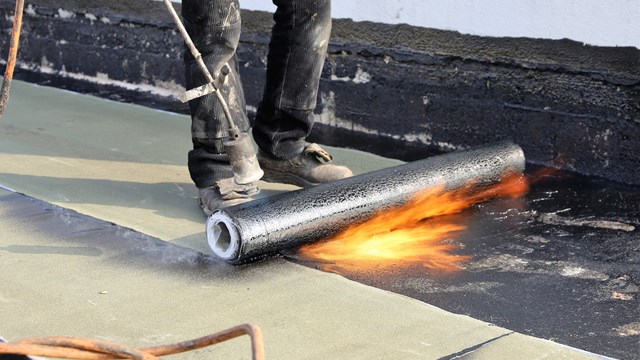
Even if your condominium or homeowner's association (HOA) is a fortified castle atop a hill and surrounded by a moat, one day, someone will hit it with a really big rock, and thus it’s inevitable: work will be done, repairs will be made, the sun will set. But some projects are of greater consequence than others, and these are often referred to as “capital improvements.”
The New York Department of Taxation and Finance defines a capital improvement as “any addition or alteration to real property that meets all three of the following conditions: It substantially adds to the value of the real property, or appreciably prolongs the useful life of the real property. It becomes part of the real property or is permanently affixed to the real property so that removal would cause material damage and it is intended to become permanent.”
In New Jersey, the definition is a bit more ambiguous, but it’s still a term derived from accounting that carries the same basic connotation, not to mention the same substance. These aren’t regular maintenance tasks, but significant endeavors that may involve a dialogue, vote, or even additional financial contributions from ownership on top of the regular monthly assessments and fees. It’s important for a board to plan from day one for these types of projects, lest it be caught unaware as the sky—or possibly the roof—comes falling down.
Legalese
While, as mentioned above, the term capital improvement applies more toward accounting than it does the law of the land, there is at least one case on the books that speaks directly toward this type of project, within a condominium or HOA setting. According to Robert Griffin, a partner with law firm of Griffin Alexander, PC with offices in Randolph, New Brunswick and New York City, said cases have established that capital improvements pertain to ‘new things.’ “The replacement of a roof, let’s say, is generally not considered a capital improvement, but a replacement of an existing improvement,” explains Griffin. “Now, if a property has aluminum siding from the 1960s, and the board opts to replace it with beautiful new vinyl siding with a marked uptick in the insulation factor, you may very well be making a capital improvement, as you’ve done something new.”
Once a project is defined as a capital improvement, it triggers an approval process that renders it more of an ordeal than a standard repair. This is due to the fact that most condominium documents require, at minimum, a two-thirds vote of ownership in order to move forward with a project of this magnitude. “That’s the average in New Jersey,” says Griffin. “But on the flip side of the coin, if you make a capital improvement you don’t have to pay sales tax. So you have to be pretty accurate when defining the work being done, as the state tax authority reserves the right to disagree with you. Is there some wiggle room? Probably. But I wouldn’t recommend stating that you’ve made a capital improvement just because you’ve replaced your shingles in kind and thus withhold paying sales tax. But nor would I say that you could be justifiably accused of having failed to take a vote of the unit owners. You have to be correct as to the project stated in your definitions.”
To add some shade of color as to what type of project properly constitutes a capital improvement, property manager Cindy Petrenko, president and owner of Complete Property Management Services in Butler, points to the section of an association’s documents that lay out elements that can be targeted for a capital reserve study, including pavement, roofs and siding. These elements all should be funded via a reserve outside of the the regular operating budget, so, were one of the elements to falter, ideally the money would be in place to replace it without affecting said budget or requiring a separate special assessment. (Although the optimal scenario and what actually comes to pass are not always simpatico.)
Doing it Well
Once a project has been accurately defined as a capital improvement and ownership has approved it via at least a two-thirds majority, all that remains is actually seeing said project through from inception to completion. Easy peasy, right?
As is so often the case, the property manager can be an association’s closest confidante when attempting to tackle a significant improvement to its property. “First of all, the property manager should help acquire the aid of a competent engineer who can guide the board through the project, assist with a request for proposal and specs, gather said proposals from licensed and insured contractors qualified to complete the work…” says Petrenko. “Everything needs to be reviewed at length. The board or manager may then consult with the association’s attorney to review a contract before awarding it to a vendor. And all parties must specify how the project is to be funded, be that through reserves, special assessment, or a loan.”
According to Petrenko, a board that has properly conducted a capital reserve study will have been consistently funding a capital reserve account that should contain adequate financing to undertake most capital improvement projects without requiring any extraordinary measures. But it goes without saying that an economic downturn or a Lemony Snicket-style series of unfortunate events can have quite an impact on associations’ coffers. Should an association find itself high and dry at the advent of a capital improvement, Petrenko stresses that, depending on the cost of said project, that association try and borrow—or assess its ownership for—as little money as possible. A capital reserve study should be performed every 3-5 years to help ensure this. “With the help of the property manager, if an association is diligently funding its reserves, it should be able to handle any project that comes up with little outside assistance, be that a loan or special assessment,” notes Petrenko.
In the event of a loan, an association would be best advised to consult its attorney, lest it find itself in over its head. “We are often involved with the closing,” Griffin says in regard to loans. “Any act of an association has to be authorized. It needs to be a certainty that a board can in fact take out a loan without consulting its owners. Sometimes, a loan is an indicator that an association has done a poor job with its reserves; that its collection schedule has not been updated for years, and is in trouble. That’s the type of thing we look at when an association tells us that it needs to take out a loan to replace a particular item.”
“Building something new, such as a pool, in my view, whether or not the declaration requires it, it’s important for an association to consult with and solicit feedback from its community before taking out a loan,” continues Griffin. “Because the entire association will be paying additional maintenance fees, in general, to support that loan. And not everybody uses a pool, or a handball court, or jogging paths. There are people who have no interest, and it wasn’t part of the bargain when they purchased their units, which is why, so often, the governing documents require that you DO go to ownership for approval before making a capital improvement.”
The Money Machine
Assuming for a minute that taking out a loan is an inevitability, there are several important things that an association should know before entering into that conversation. For starters, paying interest can vary depending on whether a cooperative or a condominium is approaching the table.
In a co-op corporation, says Barry Korn, CFA, managing director of New York City-based Barrett Capital Corporation, “The corporation borrows, based on its owning the real estate, through a mortgage known as an underlying mortgage. In a condominium, the real estate is owned individually by the unit owner, and the corporation borrows on a pledge of its common charges, which is junior to the unit owner’s mortgage.”
Again, per the above, condo bylaws are generally more restrictive in requiring a majority or supermajority of the unit owners to approve a capital expenditure above the amount specified in the bylaws. “By comparison, the business judgment rule gives the board of directors of a cooperative corporation more flexibility, says Korn. “There are also differences in the loan documents that need to be reviewed.”
Korn recommends that the board bring in a firm that can function as the building’s overall construction manager. He gives one water filtration project as an example. “The board agreed to replace the roof, but when I did the site visit with the bank, it became clear that the building had to address water infiltration from the walls and windows. As a result, we increased the amount of the loan and brought in a construction manager,” he recalls. Korn also says that a good financial advisor or broker can often obtain a better rate from the same bank than would otherwise be the case.
And Harley Seligman, vice president of National Cooperative Bank, which provides financial services to housing cooperatives and other cooperative institutions nationwide, observers the following: “With condos, we loan the exact amount. We give co-ops a little cushion because they usually have a 10-year mortgage, and there is so much time involved, that the roof may be leaking two years from now [meaning that that another, unexpected project may be necessary],” he said.
Seligman says that the person his company meets with varies from one building to another. “Some property managers are very good with handling property improvement projects. But many boards say, `We have an architect, we have an attorney on the board who can handle these matters.’
“It depends on the building. It can be an attorney, a broker, a manager. Some boards handle themselves.” Seligman personally likes to work with an experienced managing agent who might handle 50 buildings, and thus knows the ins-and-outs of the process.
And it’s worth remembering that bank loans, assessments and fee hikes aren’t the only way to raise money if your development needs more funds. According to Will Simons, RS, president of Association Reserves, a nationwide firm that conducts reserve studies for all kinds of communities, some of his clients—especially resort properties - lease out party or conference rooms for weddings and other gatherings to generate income. “If your property can make money, it’s a nice way to do so,” he says. Other communities he’s worked with use in-house labor to do smaller-scale projects once or twice a year to save expenses—such as “community painting day” in which people will come out and paint their neighbors’ garage doors. However, he says, “That’s a good solution in a pinch, and a nice way to build good relations in the community, but asking people to volunteer should be Plan B—we don’t recommend counting on that over budgeting properly for professional work.”
While experts agree that there’s no real substitute for a good reserve plan based on a study by an accredited professional, sometimes circumstances make it inevitable that other methods, such as the aforementioned bank loans, have to be used to raise funds. For example, Molly HIme, senior vice president and division director of Popular Association Banking cites an example of an urban condo development in which the balconies were determined to be unsafe by an inspector—so unsafe, in fact, that the residents had to evacuate the building until they were repaired. “The association board was able to go to the unit owners with a loan that allowed for the completion of repairs immediately with a repayment schedule over a period of time,” she says.
With proper planning and keeping a keen eye on your reserves, an association can weather a major capital improvement project with aplomb. But should you need outside help for funding, qualified experts are available to lead your association through the process by asking the right questions and getting the key people on board to make a positive improvement to your condo, co-op or HOA community.
Michael Odenthal is a staff writer for The New Jersey Cooperator.






Leave a Comment